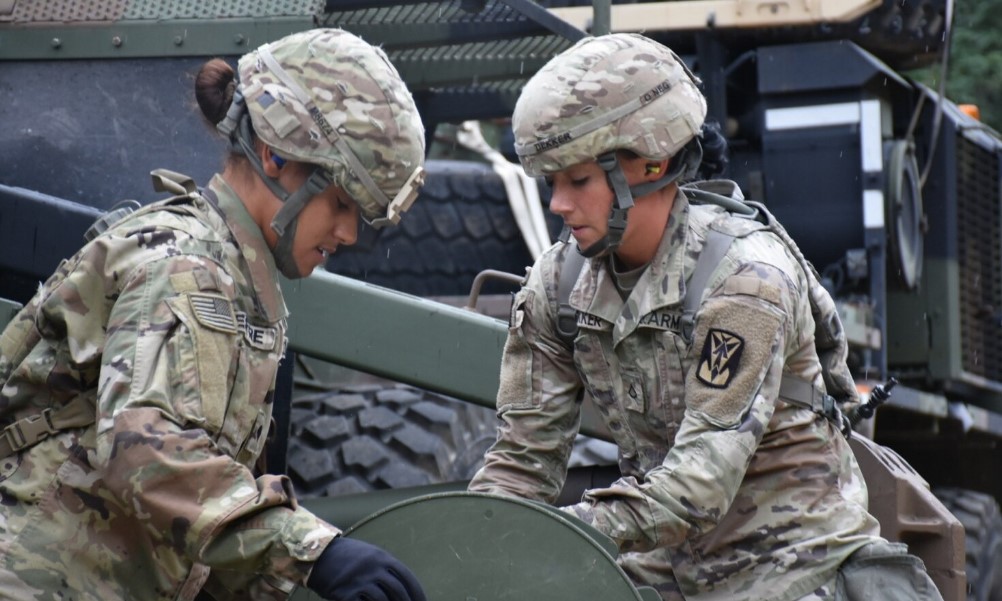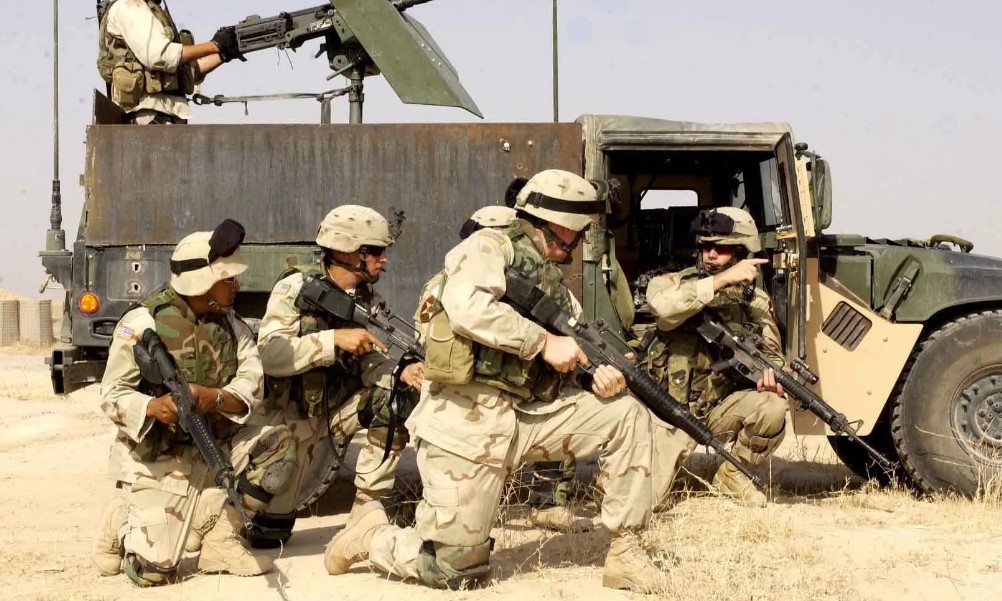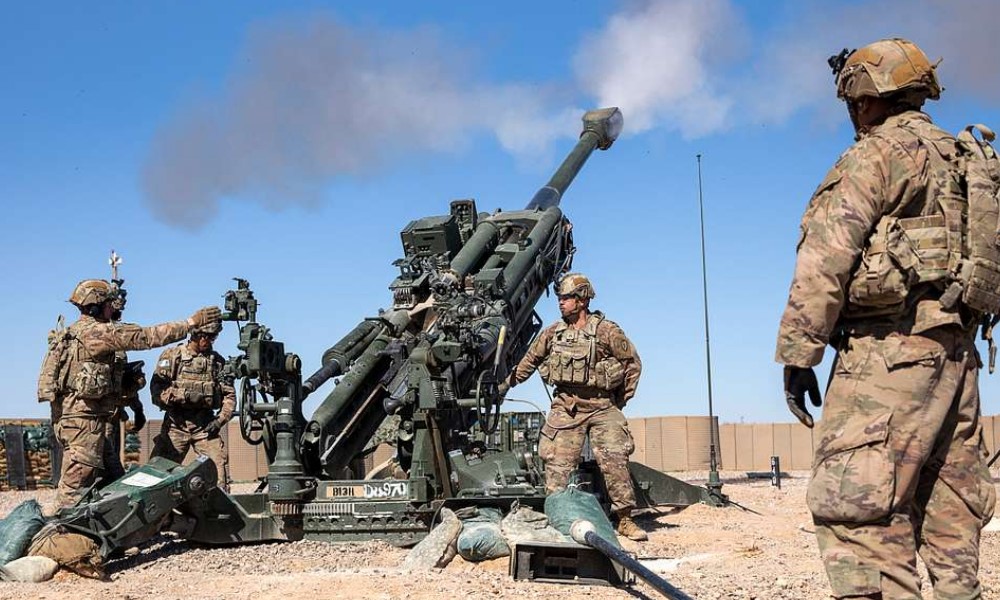The artillery platoon is a backbone of modern military operations, providing critical firepower and support to ground forces. In this guide, we will explore the top artillery platoon equipment available in 2024, providing you with detailed insights into the products, their benefits, real-world use cases, and where to purchase them. Whether you’re involved in defense procurement or simply interested in military technology, this article will serve as your comprehensive resource.
What is an Artillery Platoon?

An artillery platoon is a specialized military unit responsible for providing indirect fire support to infantry and armored forces on the battlefield. Unlike direct-fire units, artillery platoons operate from a distance, using large-caliber weapons such as howitzers, cannons, and rocket launchers to bombard enemy positions. The primary mission of an artillery platoon is to neutralize or destroy enemy forces, fortifications, and vehicles, often out of the direct line of sight.
Artillery platoons play a crucial role in modern warfare by delivering high-impact firepower over long distances, enabling infantry and armored units to advance with reduced resistance. They are also involved in tasks like area denial, counter-battery fire (targeting enemy artillery), and providing sustained fire support in both offensive and defensive operations.
These units rely heavily on advanced targeting systems, communication networks, and logistical support to ensure precise, timely, and effective fire missions. Their presence on the battlefield significantly amplifies the overall combat capability of military forces.
Key Functions of an Artillery Platoon

An artillery platoon plays a crucial role in military operations, providing indirect fire support to infantry and armored units. Its primary objective is to neutralize, suppress, or destroy enemy forces, equipment, and fortifications from a distance. The key functions of an artillery platoon include:
1. Indirect Fire Support
One of the most important roles of an artillery platoon is delivering indirect fire support. This means they engage targets that are not within their direct line of sight. Using precise calculations and advanced fire control systems, artillery platoons can strike enemy positions, even those concealed by terrain or located far from the front lines. This ability allows ground forces to focus on their operations without worrying about heavy enemy resistance.
2. Area Denial
Artillery platoons excel at area denial, preventing enemy forces from occupying or traversing specific zones. By delivering sustained fire on key areas, such as crossroads, hills, or enemy fortifications, artillery creates barriers that limit the enemy’s freedom of movement. This function is particularly useful in slowing down or halting enemy advances.
3. Counter-Battery Fire
Artillery platoons also specialize in counter-battery fire, where they target and neutralize enemy artillery positions. This is achieved by tracking enemy artillery fire and launching a rapid counter-attack. Counter-battery operations are vital for maintaining the safety of friendly units and ensuring dominance in artillery engagements.
4. Suppression of Enemy Defenses
Artillery is often used to suppress enemy defenses before an infantry or armored assault. By bombarding enemy positions with heavy fire, artillery weakens their defenses and morale, making it easier for ground forces to advance with minimal resistance.
Top 5 Artillery Platoon Equipment in 2024

1. M777 Howitzer
The M777 Howitzer is a lightweight and highly mobile 155mm towed artillery system. Designed for rapid deployment in dynamic combat environments, the M777 has become a staple for modern military forces due to its precision and versatility.
Features:
- Caliber: 155mm
- Range: 30km with standard ammunition, up to 40km with extended-range munitions
- Weight: 4,200 kg (lightweight compared to other howitzers)
- Mobility: Airlift-capable by helicopter or C-130 aircraft
Use Case:
The M777 is particularly well-suited for mobile and rapid-response operations. It is commonly used in rugged terrains such as mountains, where heavier artillery systems would be impractical. Its light weight and high mobility make it ideal for expeditionary forces that require quick repositioning.
Benefits:
- High Precision: The M777 is equipped with a digital fire control system that integrates GPS and inertial navigation, allowing for highly accurate targeting.
- Rapid Deployment: Its lightweight design allows it to be transported quickly by helicopter or truck, making it perfect for forces on the move.
- Reduced Crew Requirement: While traditional artillery systems often require large crews, the M777 is designed to be operated by a smaller team, increasing operational efficiency.
Transactional Information:
- Price: $1.5 million per unit.
- Where to Buy: Available through BAE Systems, the manufacturer of the M777.
2. Panzerhaubitze 2000 (PzH 2000)
The Panzerhaubitze 2000, or PzH 2000, is a German-made 155mm self-propelled howitzer. Known for its long range and rapid-fire capability, it is one of the most advanced artillery systems available.
Features:
- Caliber: 155mm
- Range: Up to 40km with standard ammunition, extendable with specialized rounds
- Rate of Fire: 9 rounds per minute
- Armored Protection: Fully armored for protection against enemy fire
- Mobility: Mounted on tracks, allowing for high mobility across varied terrain
Use Case:
The PzH 2000 is typically deployed in conventional warfare scenarios where long-range bombardment is required. It excels in providing sustained fire support to infantry and armored units, and its armored design ensures survivability even in high-threat environments.
Benefits:
- Firepower: Capable of delivering a high rate of fire with extreme accuracy, the PzH 2000 can overwhelm enemy defenses.
- Advanced Fire Control: The system is equipped with an automated fire control system that reduces the need for manual input, increasing efficiency and accuracy.
- Mobility and Protection: Its tracked design allows it to move across difficult terrain, while the armored chassis provides protection for the crew.
Transactional Information:
- Price: $4.5 million per unit.
- Where to Buy: Available through Rheinmetall, a leading manufacturer of military vehicles and artillery systems.
3. M270 Multiple Launch Rocket System (MLRS)
The M270 MLRS is a highly versatile, armored rocket launcher capable of firing guided and unguided rockets. Its ability to deliver a high volume of fire over a large area makes it a powerful tool in the artillery platoon’s arsenal.
Features:
- Caliber: Capable of launching multiple rocket types (227mm guided and unguided rockets)
- Range: 32km with unguided rockets, up to 70km with guided missiles
- Ammunition Capacity: 12 rockets per load
- Mobility: Armored, tracked vehicle
Use Case:
The M270 is ideal for saturation bombardment, where large volumes of fire are required to suppress enemy air defenses or cover the advance of friendly forces. It is frequently used in both defensive and offensive operations.
Benefits:
- Versatility: Capable of firing both guided and unguided rockets, making it adaptable to a wide range of combat scenarios.
- Massive Firepower: With its ability to launch multiple rockets in rapid succession, the M270 can deliver a devastating blow to enemy forces.
- Protected Mobility: The M270’s armored design allows it to operate in contested areas without exposing the crew to significant risk.
Transactional Information:
- Price: $2.3 million per unit.
- Where to Buy: Available through Lockheed Martin, the primary contractor for the M270 MLRS.
4. TOS-1A Heavy Flamethrower System
The TOS-1A is a Russian heavy flamethrower system that launches thermobaric rockets designed to obliterate enemy fortifications, vehicles, and troops.
Features:
- Caliber: Fires 220mm thermobaric rockets
- Range: 6-10km depending on the terrain and conditions
- Payload: 30-barrel launcher for multiple rockets
- Mobility: Mounted on a T-72 tank chassis
Use Case:
The TOS-1A is highly effective in urban warfare, where it can be used to destroy enemy fortifications and entrenched troops. Its thermobaric warheads create massive overpressure, making it ideal for clearing enemy positions in urban environments.
Benefits:
- Extreme Destructive Power: The TOS-1A’s thermobaric warheads create a massive explosive effect, making it capable of neutralizing enemy personnel and fortifications.
- Armor Protection: Mounted on a tank chassis, the TOS-1A is well-protected against enemy fire, allowing it to operate in contested areas.
- Psychological Impact: The sheer power of the TOS-1A has a significant psychological effect on enemy forces, often forcing them to retreat.
Transactional Information:
- Price: $6 million per unit.
- Where to Buy: Available through Rosoboronexport, Russia’s state agency for military exports.
5. M119A3 Light Towed Howitzer
The M119A3 is a 105mm light towed howitzer, known for its ease of deployment and rapid-fire capabilities. It is primarily used by airborne and light infantry units.
Features:
- Caliber: 105mm
- Range: Up to 19km with extended-range ammunition
- Mobility: Lightweight, air-transportable by helicopters
- Fire Control: Integrated digital fire control system for increased accuracy
Use Case:
The M119A3 is highly suitable for rapid deployment in airborne and light infantry operations. Its lightweight design allows for quick transport by helicopter, making it perfect for forces that need to move quickly and strike with precision.
Benefits:
- Mobility: Its lightweight design makes the M119A3 easy to transport, enabling rapid deployment in dynamic combat scenarios.
- Precision: The integrated digital fire control system ensures that the M119A3 delivers accurate fire missions, even in fast-moving operations.
- Affordability: Compared to larger artillery systems, the M119A3 offers a cost-effective solution for light infantry and airborne units.
Transactional Information:
- Price: $1 million per unit.
- Where to Buy: Available through BAE Systems.
Comparison Table: Artillery Equipment Overview
| Product Name | Caliber | Range | Price | Advantages | Disadvantages |
|---|---|---|---|---|---|
| M777 Howitzer | 155mm | 30km | $1.5 million | Lightweight, mobile, precise | Requires a larger crew |
| PzH 2000 | 155mm | 40km | $4.5 million | High fire rate, armored protection | Heavy, less mobile |
| M270 MLRS | 227mm | 32-70km | $2.3 million | Versatile, high volume of fire | Limited mobility, heavy logistics |
| TOS-1A | 220mm | 10km | $6 million | Extremely destructive in urban combat | Short range, vulnerable to long-range artillery |
| M119A3 | 105mm | 19km | $1 million | Lightweight, rapid deployment | Limited range compared to heavier systems |
Benefits of Using Modern Artillery Systems
- Enhanced Precision: Modern artillery systems, like the M777 and PzH 2000, come equipped with advanced fire control systems, integrating GPS and inertial navigation. This allows for accurate strikes, even in complex battlefield environments, reducing collateral damage and increasing mission success.
- Mobility: Systems like the M777 and M119A3 are designed for rapid deployment, enabling forces to quickly reposition based on changing tactical needs. This mobility is crucial in dynamic combat zones, where the ability to move and strike fast is key.
- Adaptability to Multiple Scenarios: From long-range bombardment (PzH 2000) to urban warfare (TOS-1A), modern artillery provides flexible solutions that can be adapted to various combat scenarios. This versatility makes it indispensable to ground forces.
- Force Multiplier: Artillery’s ability to provide fire support over large areas makes it a force multiplier, enhancing the effectiveness of infantry and armored units. It can engage enemy forces before they come within range of direct fire, softening their defenses and making infantry advances more manageable.
Transactional Guide: Where and How to Buy Artillery Equipment
Artillery systems are typically purchased through government defense contracts, but authorized buyers can engage with manufacturers directly. The following are some leading manufacturers:
- BAE Systems: Producers of the M777 and M119A3.
- Rheinmetall: Developers of the PzH 2000.
- Lockheed Martin: Makers of the M270 MLRS.
- Rosoboronexport: Suppliers of the TOS-1A heavy flamethrower system.
For inquiries, visit their official websites to explore options for defense contracts, purchase arrangements, or product demonstrations.
FAQs
1. What is the role of an artillery platoon in modern warfare?
An artillery platoon provides indirect fire support, delivering powerful bombardments from a distance to suppress or neutralize enemy positions. This gives infantry and armored units the opportunity to advance without encountering heavy resistance.
2. Can civilians purchase artillery equipment?
No, artillery equipment is strictly for military use and can only be acquired by authorized governments and military personnel through defense contracts.
3. What makes the M777 Howitzer unique?
The M777 Howitzer is known for its lightweight design, allowing for rapid deployment. Its precision and mobility make it ideal for dynamic battlefield environments where quick repositioning is required.
4. How does the M270 MLRS differ from traditional howitzers?
The M270 MLRS is a rocket artillery system, designed for saturation bombardment. Unlike traditional howitzers, it can launch guided and unguided rockets, providing a high volume of fire over a large area.
5. What is the price range for modern artillery systems?
Prices vary based on the system and its capabilities. Light howitzers like the M119A3 cost around $1 million, while advanced systems like the PzH 2000 can cost up to $4.5 million.